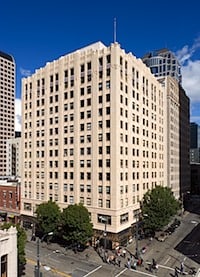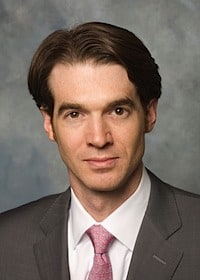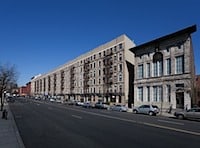“To repair the fabric of cities, towns and communities while preserving the land around them” is the stated mission of Jonathan
Founded in 1989 by a third-generation developer who sought to mix his passion for real estate with his passion for making a difference in urban communities, every project of Jonathan Rose Companies is guided by five principles: First, to increase the diversity of the places where people live and work–mixing public spaces with residences, workplaces, marketplaces, and education and spiritual centers. Second, to build with environmental sensitivity using a combination of high-tech modeling techniques and practical, often low-tech solutions. Third, to support the integration of work life and personal life–as expressed by “livelihood.” Fourth, to be mindful of the linkages between projects, users and their surroundings. And fifth, to consider that change is a given for real property as it is for all things, and thus to recognize that development projects must be conceived to adapt to often unanticipated future needs.
After establishing a long track record for high quality, mixed-income, mixed-use property development, Jonathan Rose Companies launched the Rose Smart Growth Investment Fund I in 2005. The Fund was the first of its kind in the country to focus exclusively on acquiring and greening existing buildings in walkable, transit-based communities. “Jonathan had been investing successfully with different groups of investors for over 15 years and he thought it was time to put together a fund that would give him the flexibility to act quickly when he found suitable investments,” says Wendy Rowden who joined the firm in January 2009 as managing director of its Investment Practice. “The fund gives us an opportunity to take our green, mission-driven investment approach to scale.”
The Investment Appeal of the Smart Growth Fund
The Fund, which was closed to new investments in 2009, has raised $50 million. “It is an unprecedented time of interest in green building that would have been unthinkable ten years ago,” says Nathan Taft, director of acquisitions for the Fund. “Green building is no longer a social ‘do-good,’ it is an economic imperative.”
Rowden reports that Rose Smart Growth Investment Fund investors include both “savvy” real estate investors who understand the economic and investment value in green retrofitting, as well as social investors seeking a market rate investment with a mission focus. While Smart Growth Investment Fund projects all support the company’s underlying mission they are undertaken on a strictly for-profit basis. Taft maintains that investing “smartly” in green retrofits on the right properties is an essential element of the Fund’s value creation strategy, which focuses on strengthening the top-line, reducing expenses and increasing net operating income. Taft reports that recent studies indicate that tenants prefer green space, which provides the Fund with a marketing advantage and leads to higher tenant retention, even in a down market.
The Smart Growth Investment Fund has attracted interest from an array of seasoned impact investors including TIAA-CREF’s Corporate Social Real Estate Portfolio, which holds a 21 percent stake. The Portfolio has a triple bottom line strategy: to achieve market rate returns, high social impact and environmental sustainability with its investments. “The Smart Growth Investment Fund hits all my screens in the way few funds do,” says Cherie Santos-Wuest, the director of TIAA-CREF’s Global Social and Community Investments Group. She also notes that while many real estate developers are trying to inhabit the green retrofit space, there is a steep learning curve, and few have Jonathan Rose Company’s longevity and expertise in the sector. [See The Impact Investor’s profile of TIAA-CREF’s Social Real Estate Portfolio.]
The Smart Growth Investment Fund also wins points with impact investors for its “purity of purpose. ” “While some REITS are trying to green their portfolios ours is green from the ground up,” says Taft.
Low Cost Green Strategies Yield Short Term Paybacks
While Fund projects employ highly sophisticated energy modeling techniques, most all of its green retrofits are selected to meet the Fund’s relatively short investment payback requirements. (An exception was the West 135th Street apartments in Harlem [see “Smart Growth Fund Projects” box to the right], which received state and federal grants to offset some of the cost of a solar panel installation.) “There are a lot of lower cost strategies that do a tremendous amount to improve energy efficiency and air quality of a building,” says Rowden. “We look at the building envelope and base building systems, as well as interior tenant spaces and common areas. We do everything from installing low-flow water fixtures, higher efficiency lighting and motion sensors, to increasing building insulation. While these things may not be as glamorous as the higher tech solutions in new green buildings, they make a lot of economic sense.”
“There is a misconception that greening existing buildings uniformly requires extensive capital improvements,” Taft further elaborates. “For some existing buildings getting to a third-party verified green certification requires less of a focus on capital and more on commissioning existing systems, such as HVAC, and operating the buildings in a green manner. It requires a thoughtful approach, understanding the building as a system and tweaking things to have impact. We bring together our team of architects and engineers at the outset of a project to determine the best greening approach for a building and how to spend your money wisely. It isn’t a matter of tacking green on piecemeal or at the end of a renovation.”
How the Fund Picks Properties
While “greening” is always figured into the equation when the Fund underwrites a project, it does not bank on the associated cost savings when forecasting projected returns. Instead, under Taft’s direction, the Fund selects properties with “good architectural bones” in the right location, and with the right tenant mix. “These are the qualities that provide great long-term appreciation value,” says Rowden. “Green is not going to make a bad asset a good asset, it will make a good one a great one.”
The Smart Growth Investment Fund acquires two types of properties: class B office buildings and affordable housing. All investments are located in walkable downtowns, most often near or adjacent to more than one mode of mass transit, including rail, bus or light rail. “We focus on the larger, gateway cities that are rich in connectivity as well as intellectual and cultural capital, ” says Rowden.
The Rose social mission is always inextricably intertwined with the financial one. “We are attracted to urban downtown areas because they are historically underinvested,” reports Taft. “Our projects are pivotal to the revitalization of a neighborhood. We feel real estate plays a powerful role in peoples’ lives. Our projects enable low-income families to spend less money on utilities and less time and money getting to services, schools and work.”
Tapping In-house Expertise
The Fund is fortunate in its ability to tap into the in-house expertise of other Jonathan Rose Companies practice areas: The Jonathan Rose Companies’ Development group builds new “green” affordable and mixed income housing; the Planning Practice engages in longer-term planning at the city, regional and national level, with an emphasis on building livelier, healthier and more equitable communities (for example, the planning group wrote the green guidelines for rebuilding southern Louisiana after Katrina); and The Owner’s Representative Practice consults as program managers to cultural, civic, and educational projects (it advised Cooper Union on the construction of its new academic building).
Measuring Up to Green Building Standards And Beyond
Although the standards for green building continue to evolve, Rose Smart Growth Investment Fund projects are focused on attaining or exceeding them. The Fund seeks to meet LEED standards for office buildings, and Enterprise Green Communities standards, as well as LEED, for affordable multifamily projects. Energy Star certification is used for both. “Even if the standards are not ideal they are objective, difficult to game and provide important third-party verification of our work,” says Rowden.
Fund projects go far beyond simply making energy efficiency improvements. Project managers also work with tenants to operate the buildings in a green manner going forward. Green manuals are published and distributed to tenants. “We want tenants to be engaged in keeping the buildings green,” says Rowden. “It is not just getting LEED certification but how the building works going forward.” In the case of the Vance project in Seattle, the Fund has been very successful in hosting post-LEED certification “green charettes” to brainstorm ideas for maintaining and enhancing the sustainability of building operations. The Fund also often seeks linkages with workforce training programs looking to stitch the asset into the community. For example, in Seattle, the Fund selected a local firm for recycling, composting and sidewalk cleaning services, which returned at-risk populations to the local workforce.
“It is an unprecedented time of interest in green building that would have been unthinkable ten years ago. Green building is no longer a social ‘do-good,’ it is an economic imperative.”
Commercial tenants are also encouraged to build out space according to a green tenant improvement specification, which emphasizes open floor plans to minimize resource consumption. Open floor plans not only preserve natural light and appeal to workers but also are more cost effective from the owner’s
 |
We like to be involved inn projects that weave together interesting communities ,” says Nathan Taft, director of acquisitions for the Rose Smart Growth investment Fund. “We think it makes for a richer life.”
perspective, minimizing demolition costs for the next tenant.
The Fund’s retrofits also improve the work and living environments for tenants. In addition to low VOC paints and sealants in construction, all cleaning products are green and integrated pest management is implemented at all project sites.
Moving Away from Suburbia and the Return to the Urban Green
Rowden notes that over the past year alone, greater awareness of climate change and of the significant role that energy efficiency can play in addressing it is translating into a heightened interest in green retrofits. She also sees demand for green retrofits accelerating in urban areas in particular. “As energy prices rise, there will be increasing demand for green, energy efficient space that is mass-transit accessible. In 2008, when oil prices rose, Americans drove less. Data indicate that rates of car ownership for people under 30 are declining. There is more interest in urban locations and dense suburban nodes near mass transit, jobs and amenities.”
It is also the Jonathan Rose Companies’ philosophy that city life offers other, less quantifiable attractions that have stood the test of time. “Diversity is a key piece of what we are looking for when we redevelop a mixed-income project—it is in our DNA,” Taft reports. “We are looking not just for racial but economic diversity. We like to be involved in projects that weave together interesting communities. We think it makes for a richer life.”—Susan Arterian Chang can be reached at [email protected].



